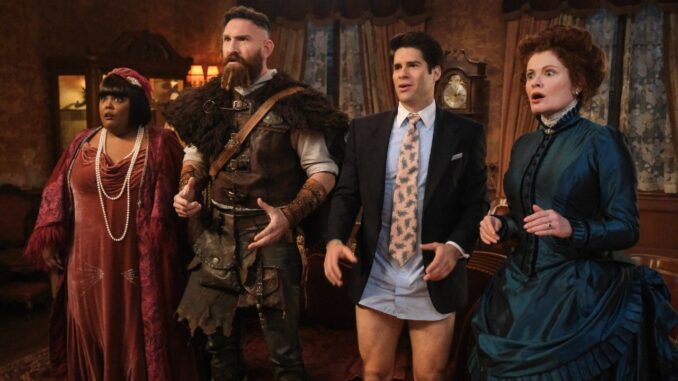
The Chilly Truth of the Pantless Poltergeist: How Trevor, the Actor, Finds Warmth
The spectral realm, as depicted in the beloved series "Ghosts," is a place of endless anachronisms, existential quandaries, and, for one particular spirit, a perpetual wardrobe malfunction. Trevor, the finance bro ghost, is famously, tragically, and hilariously, without his pants. For the actor tasked with bringing this sartorial dilemma to life – or rather, to undeath – the challenge extends far beyond memorizing lines. It delves into the very real, very physical predicament of keeping warm while embodying a character who, for all intents and purposes, exists in a state of perpetually exposed lower limbs, often on a brisk British film set. This isn't just acting; it's an extreme sport in thermal management, a testament to an actor's dedication, and a masterclass in creative warmth-seeking.
The premise itself is foundational to Trevor's character. His unfortunate demise, involving a wild party and a misplaced pair of trousers, locks him into an eternal state of undress from the waist down. For the viewers, it’s a running gag, a visual shorthand for his past life of excess. For the actor, however, the laughter on screen often belies a silent, shivering struggle off-camera. Filming, particularly for a show set largely in one location (a sprawling country estate), means long hours, early starts, and the capricious whims of nature. A ghost might not feel the cold, but a living, breathing human actor certainly does. The wind bites, the damp seeps in, and suddenly, the comedic choice becomes a deeply personal, physiological battle against goosebumps.
So, how does one portray a cavalier, pantless ghost without succumbing to hypothermia between takes? The strategies employed by Trevor’s portrayer are a fascinating blend of practical ingenuity, crew solidarity, and a healthy dose of mental fortitude.
Firstly, there is the Invisible Cocoon. While the character is visually unclad, the actor is often allowed a thin layer of skin-tone thermal underwear, strategically chosen to be imperceptible on camera. This acts as a crucial first line of defence, a whisper of warmth that wards off the initial chill. It's a small concession to comfort that makes a world of difference, allowing the actor to focus on character rather than the involuntary shivers threatening to break the illusion.
Secondly, the Dynamic Dash and Blanket Bomb. Film sets are a marvel of efficiency and care for the cast. The moment "cut" is called, a flurry of crew members descends. For Trevor, this means a lightning-fast sprint from his mark to the nearest heat source, usually a portable heater or a waiting chair draped with an enormous, enveloping blanket. This isn't just any blanket; it's often a thermal, perhaps even heated, behemoth, ready to swaddle him like a human burrito. Hot tea or coffee materializes, a small, steaming beacon against the cold. The quick changes from exposure to insulation are key, minimizing the duration of direct contact with the ambient temperature.
Then there's the Method of Mental Warmth. Actors are masters of illusion, and sometimes, the greatest trick is convincing oneself. Trevor, the character, is oblivious to the cold, too caught up in his spectral existence and his perpetual yearning for a good time. The actor must channel this carefree disregard for physical discomfort. By focusing intensely on the scene, on the character's motivations and interactions, the mind can temporarily override the body's natural inclination to shiver. It’s a form of active meditation, transforming discomfort into raw material for the performance.
Finally, and perhaps most endearingly, is the Solidarity of the Crew. A film set is a family, and seeing one of their own literally exposed to the elements fosters a unique sense of camaraderie. Grips might subtly adjust a lamp to cast more residual heat his way, costume designers might have a stash of extra hand warmers, and the director might strategically schedule pantless scenes for warmer parts of the day. This collective effort highlights the unseen ballet of cooperation that underpins every successful production, making a challenging role not just bearable, but even enjoyable.
The plight of Trevor, the pantless ghost actor, is more than just a humorous anecdote. It's an illustrative example of the myriad, often unsung challenges faced by those who bring stories to life. It speaks to the dedication required, the ingenuity fostered on a film set, and the subtle heroism of actors who commit fully to their roles, even when those roles demand a certain vulnerability – be it emotional or, quite literally, epidermal. While Trevor may remain forever frozen in his state of pantless abandon, the actor behind him skillfully navigates the chilly realities of the set, proving that even a ghost needs a few tricks up his (non-existent) sleeve to stay warm.
